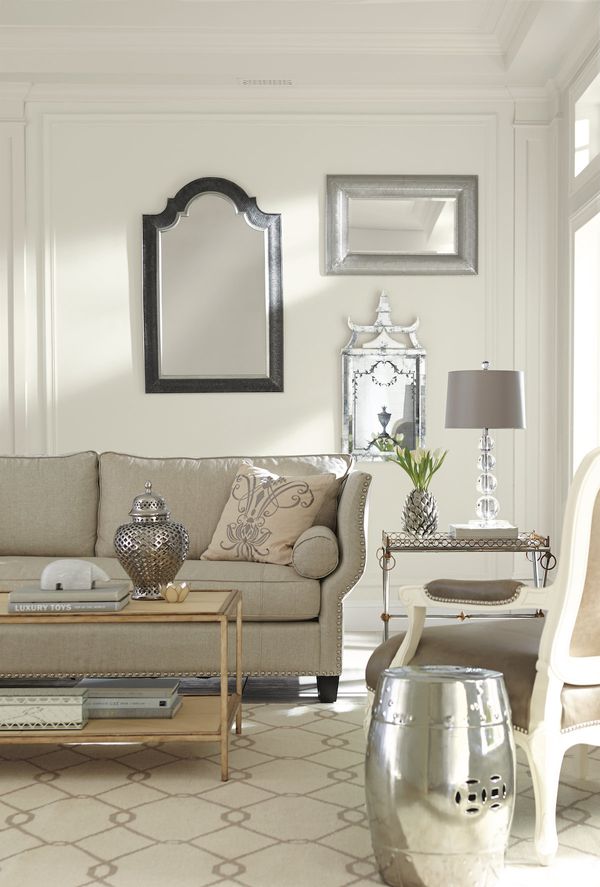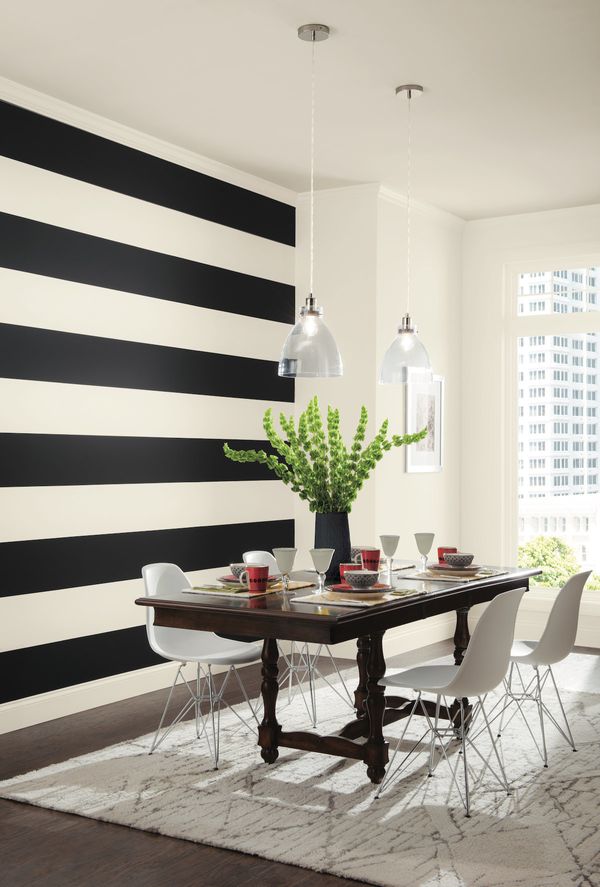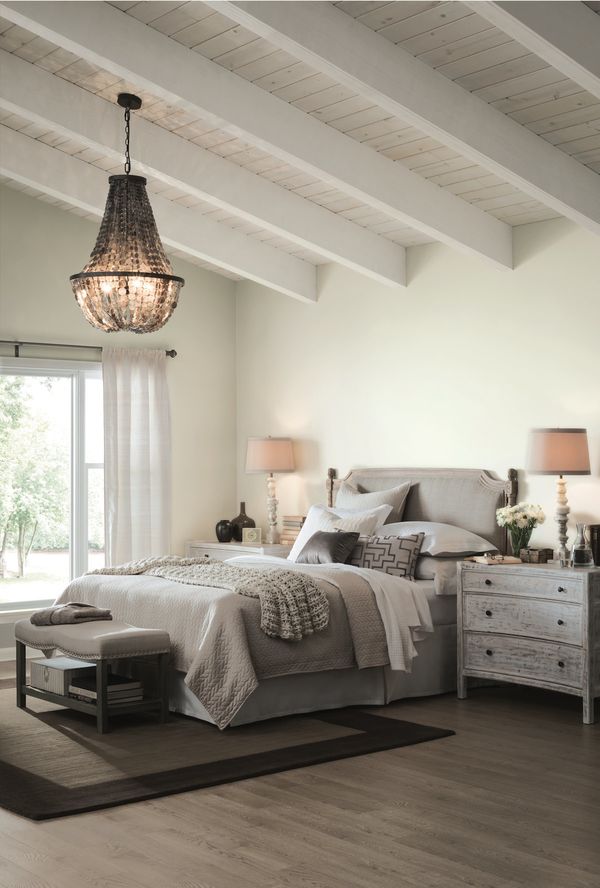Norma Sklarek, FAIA: A Litany of Firsts that Defined a Career, and a Legacy
By Layla Bellows
| ||
Norma Sklarek, FAIA, died Feb. 6, after pioneering a career that saw her become a leading designer in her own right, and an influential mentor to other minority and women architects who followed in her trailblazing footsteps. The cause was heart failure. She was 85.
Sklarek’s name is associated with a litany of firsts including the first African-American woman to become a member of the AIA (1959) and the first African-American woman to become a Fellow of the AIA (1980). She was called the “Rosa Parks of architecture” by AIA Board Member Anthony Costello, FAIA, when she was honored with the 2008 Whitney M. Young Jr. Award. Former AIA President Marshall Purnell, FAIA, credited her with making possible his career as well as the careers of many women and minority architects.
Tenacity and talent
“She was very charming, elegant, and beautiful,” says Kate Diamond, FAIA, who knew Sklarek as a mentor, a friend, and as a partner at Siegel, Sklarek, Diamond in the 1980s, the first architecture firm to be formed and managed by an African-American woman. “Behind that was a backbone of stainless steel, and an intellect and ability to deliver that was extraordinary.”
That backbone, intellect, and talent underpinned a career marked by overcoming both explicit and implicit racism and sexism. “All of us, and certainly Norma, carry the scars of opportunities that were closed when clients made assumptions that were unwarranted, but if you let that stop you, none of us would have survived at all, and Norma certainly wouldn’t have,” Diamond says. “She simply made up her mind to look at the good side of things and find a way around it. If one door wasn’t opened, she was going to open another one. And she did that consistently all the way down the line.”
Sklarek hired Michael Enomoto, FAIA, at Gruen in 1973, and today he is a partner. “When she was working at Gruen, we didn't spend a lot of time talking about the social injustices of life,” says Enomoto, President of the AIA California Council. “She didn’t spend time moaning and groaning. We just worked hard, we did good architecture.”
Mentorship
A New York City native, Sklarek graduated from Columbia University in 1950. After a brief stint working for Skidmore Owings and Merrill, she moved to Los Angeles to work at Gruen. During her 20-year tenure there, Sklarek completed some of her most important projects, including Fox Plaza in San Francisco, the American Embassy in Tokyo, and the Queens Fashion Mall in New York. From 1980 to 1985, she was a vice president at the Welton Becket firm, where she designed the Terminal One building at Los Angeles International Airport. Sklarek headed her own firm for four years after that, and in 1989, she became a principal with Jon Jerde Inc., now known as the Jerde Partnership, where she worked on the Mall of America in Minneapolis. Sklarek had been semi-retired since 1996.
For a generation of minority and women architects, Sklarek served as a symbol of what could be, and was a stalwart mentor to those she knew.
“For Norma to be leading the entire department of a major architectural practice and doing truly high-visibility, cutting-edge work was something that we all looked to, and we all took pleasure from,” Diamond says. “She was teaching, she was engaged, and she was available to young architects, particularly to women and minority architects.”
Sometimes her mentorship was subtle, often not recognized by those she worked with until many years later. “On her last day at Gruen, she took me aside and said ‘Don’t let them get you down.’ I didn't understand what she meant, I just kind of said ‘fine.’ It was only many years later that I understood she meant ‘Don’t let the obstacles placed in front of minorities prevent you from getting ahead,’” says Enomoto, who is Asian-American.
Sklarek’s legacy
Perhaps most importantly, Sklarek’s legacy and accomplishments inspired those around her to become advocates for a more diverse profession. “I remember what it was like in architecture school in USC when I was there,” says Chet Widom, FAIA, a former President of the AIA and founding partner of the Los Angeles firm WWCOT. “There were maybe two women in the entire school of about 400 people. It was incredibly rare. It certainly was rare to see black men, but to see a black woman going through the process and succeeding—she was this high-powered woman—that set the tone for me.” As such, Widom has been involved with improving diversity within the industry since the 1970s.
Widom and others note that things are different today. Two partners who followed Widom at his firm are women. Enomoto says Gruen’s staff is 49 percent female and 60 percent minority, something he says is certainly a legacy of Sklarek. Diamond notes that there is a smattering of female design principals in major multinational firms today, but that it is still not easy. “I like to think we broke the glass ceiling, but there is still what a friend of mine calls a maze,” she says.
Diamond (now a principal at HMC Architects) says the key for Sklarek being able to break through these barriers was using wit to navigate social politics and get ahead. “She didn't overcome these things by fighting them,” Diamond says. “She would charm them and then she would deliver. It’s that combination that I think helped her overcome amazing obstacles.”
| ||
| ||
Reference:
Visit the AIA’s Diversity and Inclusion website.
| ||
SimplymeCWB
Monday, February 15, 2016
Architecture & Black History Month
Monday, January 11, 2016
COLOR OF THE YEAR...is color-less!!! LOVE!!!
Sherwin-Williams' 2016 Color Of The Year Is.. White.
Sherwin-Williams announced its 2016 color of the year today, and it is -- are you ready for this? It's white. Again.
Technically called "Alabaster," it is a hue "symbolic of new beginnings," Sherwin-Williams said in a statement and "represents a straightforward and necessary shift to mindfulness, well-being and an atmosphere that is pure,” its Director of Color Marketing, Jackie Jordan, added.
It's also the third white to be chosen as a color of the year this year, preceded by"Simply White," picked by Benjamin-Moore, "Cappuccino White", Glidden's choice, and "Bowstring" and "Ivory Keys," which are deemed color trends by Behr.
In case you can't picture it, here's what Sherwin-Williams' choice looks like upclose:
 COURTESY SHERWIN-WILLIAMS
COURTESY SHERWIN-WILLIAMS
If it feels like you're being bombarded with shades of white this year, you can blame your peers: "Sherwin-Williams spends an extraordinary amount of time researching color trends and why certain colors are resonating with certain people," Jordan told The Huffington Post in an email. Its National Home Design and Color Survey found that 73 percent of respondents liked "Alabaster" for its ivory tone, rather than plain white.
"We feel that whites are resonating with consumer attitudes across genders and generations rather than one specific group," Jordan said.
As described on its website, Sherwin-Williams' Pura Vida campaign focuses on earth tones, or colors reminiscent of "the elements that remind us to live well, be well, and stay well. Alabaster holds so much symbolism for peace and tranquility," Jordan told HuffPost.
"We have found that consumers are overwhelmed and are finally coming to the realization that they need to slow down, commit to down time, get away from technology, enjoy solitude or quiet evenings in the company of family and friends. White is the perfect color to soothe a space and calm the soul," she said.
To use it in a room, Jordan recommended to use "lots of layers, shapes and textures and a combination of matte and glossy surfaces. Think heavy knitted throws, sleek white marble, white birch logs, shag or Flokati rugs, white subway tiles, architectural elements, geometric or organic pottery shapes."
Here's how "Alabaster" looks in a room:
 Courtesy Sherwin-Williams
Courtesy Sherwin-Williams Courtesy Sherwin-Williams
Courtesy Sherwin-Williams Courtesy Sherwin-Williams
Courtesy Sherwin-Williams
James CaveLifestyle Staff Writer, The Huffington Post
Thursday, June 13, 2013
Monday, June 10, 2013
A full description
Starling Darling
I
felt it necessary to explore and emulate nature’s beauty. The Starling have many features that inspires
the construction and the sustainable features of the chair. Starlings are medium-sized song birds with
triangular wings hence the inverted triangular shaped arms of the chair. They have strong feet and their flight is
strong and direct. By mimicking this
concept in the chair, it’s smaller than most accent chairs in size
[3’10”
H x 2’ 7” W x 1‘8” D] and unusual shaped arms and legs are stronger than most
built chairs. I consulted the bird’s
skeletal system and applied the underlying design principles to shape, form,
and construct a sustainable piece of furniture that can carry it’s weight for
many years to come.
Furniture
has always found inspiration on the fashion runways, from color trends to
fabrics to construction. The link between fashion design and furniture design
is strong and everlasting.
Starling
Darling is built for comfort; therefore, it is also equipped with mechanics
that features some of today's most technological advances in bio-textiles and
electronics. Due to this blend of these
extraordinary components, a great deal of thought has been placed in the
analysis of kinetics, center of mass, and human comfort zones. The back of the chair is motorized and
reclines in the 3 most common positions for an adult.
The
“Starling Darling” is designed to highlight that close relationship to fashion
and to showcase its connection to nature.
It’s a perfect fusion
of
high fashion, kinetics, and biomimicry!
Friday, February 1, 2013
Bringing New Life & Character to Pickett Cotton Mill
Students:
This studio will unfold the reimagining of the historic Pickett Cotton Mill in southwest High Point through a rehabilitation that understands the mill’s authenticity, respects it past ‘voice” and expresses its future ‘voice’ within a revitalized Southwest High Point. Your designs will be mixed-use projects incorporating a combination of “third places” as well as apartments, live/work units, artist studios, and a childcare center. A central focus to the studio project will be developing strategies and tactics for the adaptive reuse of a historic building based on a clear analysis of its existing “voice” and its larger context. Our approach will be respectful of the building’s historic character and will be guided in part by Graeme Brooker and Sally Stone’s book Rereadings Interior Architecture and the Design Principles of Remodeling Existing Buildings and by the theory of third places from Ray Oldenburg’s The Great Good Place: Cafés, Coffee Shops, Bookstores, Bars, Hair Salons and Other Hangouts at the Heart of a Community.
This studio will unfold the reimagining of the historic Pickett Cotton Mill in southwest High Point through a rehabilitation that understands the mill’s authenticity, respects it past ‘voice” and expresses its future ‘voice’ within a revitalized Southwest High Point. Your designs will be mixed-use projects incorporating a combination of “third places” as well as apartments, live/work units, artist studios, and a childcare center. A central focus to the studio project will be developing strategies and tactics for the adaptive reuse of a historic building based on a clear analysis of its existing “voice” and its larger context. Our approach will be respectful of the building’s historic character and will be guided in part by Graeme Brooker and Sally Stone’s book Rereadings Interior Architecture and the Design Principles of Remodeling Existing Buildings and by the theory of third places from Ray Oldenburg’s The Great Good Place: Cafés, Coffee Shops, Bookstores, Bars, Hair Salons and Other Hangouts at the Heart of a Community.
Professor Jo Leminstol
Thursday, January 17, 2013
Susan Szenasy’s METROPOLIS
Susan Szenasy’s
METROPOLIS
Susan
is Editor in Chief for the world-renowned architecture and design magazine Metropolis. She graciously constructed a
presentation while on tour for the
“Inclusive Design for the Next Generation competition!” As she took the podium she is a modest, humble
and honest soul…she began to speak from her heart. With a spirit of service she shares with us
that she’s just brunt out on design contents that simply encourages creating,
building pretty worthless things, spaces.
She feels that design is more than styling and more about human
concerns. So, how does good design
derive? Susan’s short answer and theory
is, “through an interest in social and
ethological conditions”.
She
plays a short film and introduces her audience to several teams of people whom
had an interest in this very thing, or simply asked a question. We learn that Genware, the Hydro Wall, Lunar
Residence Streetlights, and the Solar Façade are all fascinating inventions by
people who perhaps recognized a problem, asked themselves a question and used
technology to solve the problem. Careful
not to believe that technology solved the problem, only helped. We understand and it’s demonstrated that
there are “NO limits to human imagination” .
I am
also intrigued that Susan unveils common mistakes / obstacles that often
prohibit many of us from moving forward with our creations. She identifies “Funds” or the lack of, would
be the number one obstacle that many of us face when we set out to design. Therefore, she explained that one could have
to fund one’s very own project. Also,
bringing in investors would be a strongly urged to jumpstart a project.
Question
: “How
do you step into the dialogue of sustainability?” Susan encourages her audience to
“think of a built environment in an organic perspective”. She believes that incorporating multiple
disciplines when designing a building is really the best approach from the
start.
Question : Do
we allow outdated technology and methods dictate our level of thinking and
doing? Or, do we rise to the occasion and
utilize recent discoveries in technology to advance in sustainability? How do you make a building breathe on it’s
own, produce it’s own heat?
Design
has to be at the center of solving problems?
Where
will I fit in the dialogue?
Subscribe to:
Posts (Atom)


+copy+3.JPG)
+copy+6.JPG)
+copy+4.JPG)
+copy+7.JPG)
+copy+8.JPG)
+copy.JPG)
.JPG)
+copy+9.JPG)
+copy+5.JPG)





